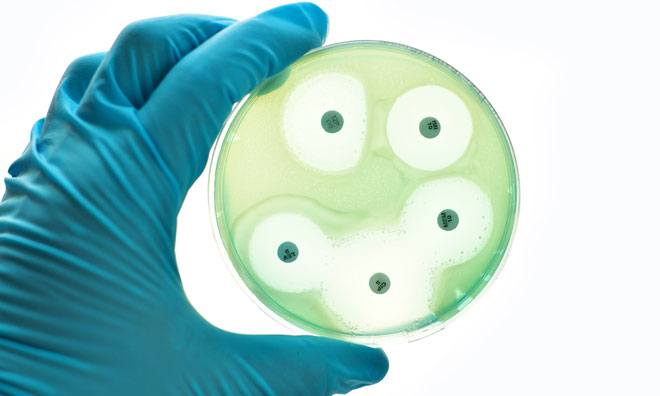Since Alexander Fleming’s rather fortuitous discovery of penicillin in 1928, a vast array of antibiotics have been discovered and developed. Recently, in response to the growing problem of antibiotic resistance, scientists have been investigating the antimicrobial properties of another naturally occurring substance — the skin secretions of the Phyllomedusa bicolor, also known as the Giant Monkey Frog, or Kambô Frog.
The Problem of Antibiotic Resistance
According to the World Health Organization, antibiotic resistance is one of the biggest threats to global health, food security, and development today, and a growing number of infections – such as pneumonia, tuberculosis, gonorrhoea, and salmonellosis – are becoming harder to treat as the antibiotics used to treat them become less effective. The result is the spread of communicable disease and soaring healthcare costs. Unfortunately, the misuse and overuse of certain antibiotics is a contributing factor to this problem.

The issue of antimicrobial resistance was a point of discussion at a recent World Economic Forum Annual Meeting in Davos, Switzerland. According to Space Time Ventures chairman Juan Carlos Castilla-Rubio, as reported on in an article by the World Economic Forum, antimicrobial resistance is “the biggest crisis of the 21st century.” That article also explains how no new class of antibiotics has been introduced since 1987 and, with no new antibiotics coming to market, deaths from antimicrobial resistance will increase to 10 million people per year by 2050.
And this is where the Giant Monkey Frog come in.
 Giant Monkey Frog’s Antimicrobial Secretions
Giant Monkey Frog’s Antimicrobial Secretions
The Giant Monkey Frog is found in many countries of South America. Interestingly, secretions from the frog’s skin are used throughout the region (and the world) in a certain, unusual ritual. The ritual involves deliberately burning areas of the skin and then applying the excretions of the frog to the fresh wound. The intention of the ritual, apart from inducing projectile vomiting, is to purify the body and heighten the senses. Of course, as is the case with many unregulated forms of medicine, there have been stories of both success and disaster.
While the secretions of the Giant Monkey Frog have been well-established as a neuroactive agent, studies have also alluded to their antimicrobial properties. The secretion contains chemicals known as ‘antimicrobial peptides’, or ‘AMPs’. In fact, it’s loaded with them. And these AMPs are known to kill bacteria, viruses and parasitic organisms. According to one study, AMPs ‘represent one of the most promising future drug candidate[s] for combating infections and microbial drug resistance.’
Of course, there are plenty of other antibiotics currently available to fight infection. However, as was mentioned above, many scientists and medical professionals are concerned about the growing cases of antibiotic resistance. Therefore, the secretions of the Giant Monkey Frog have been suggested as a possible source of new and improved antibiotics.

The Challenges
The challenge appears to be in developing these substances into selective, tried and tested pharmaceuticals. Another challenge, as highlighted in the World Economic Forum article cited above, is the destruction of the areas, such as the Amazon, from which we derive naturally occurring and medicinally beneficial compounds.
Scientists and environmentalists are certainly working to ensure that suchlike habitats are preserved and maintained. If they succeed in slowing down the destruction long-term, like Fleming’s rather fortuitous discovery of yesteryear, there will undoubtedly be more remarkable discoveries in the field of medicine to come.
Source:
Source Article from https://worldtruth.tv/can-this-frogs-special-power-save-millions-of-lives/
 RSS Feed
RSS Feed















 April 5th, 2018
April 5th, 2018  Awake Goy
Awake Goy  Posted in
Posted in  Tags:
Tags: 













